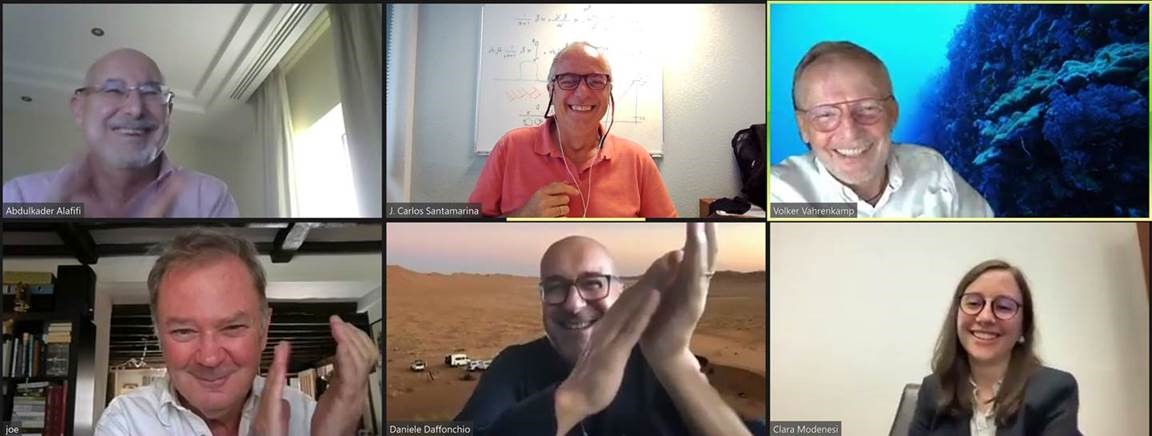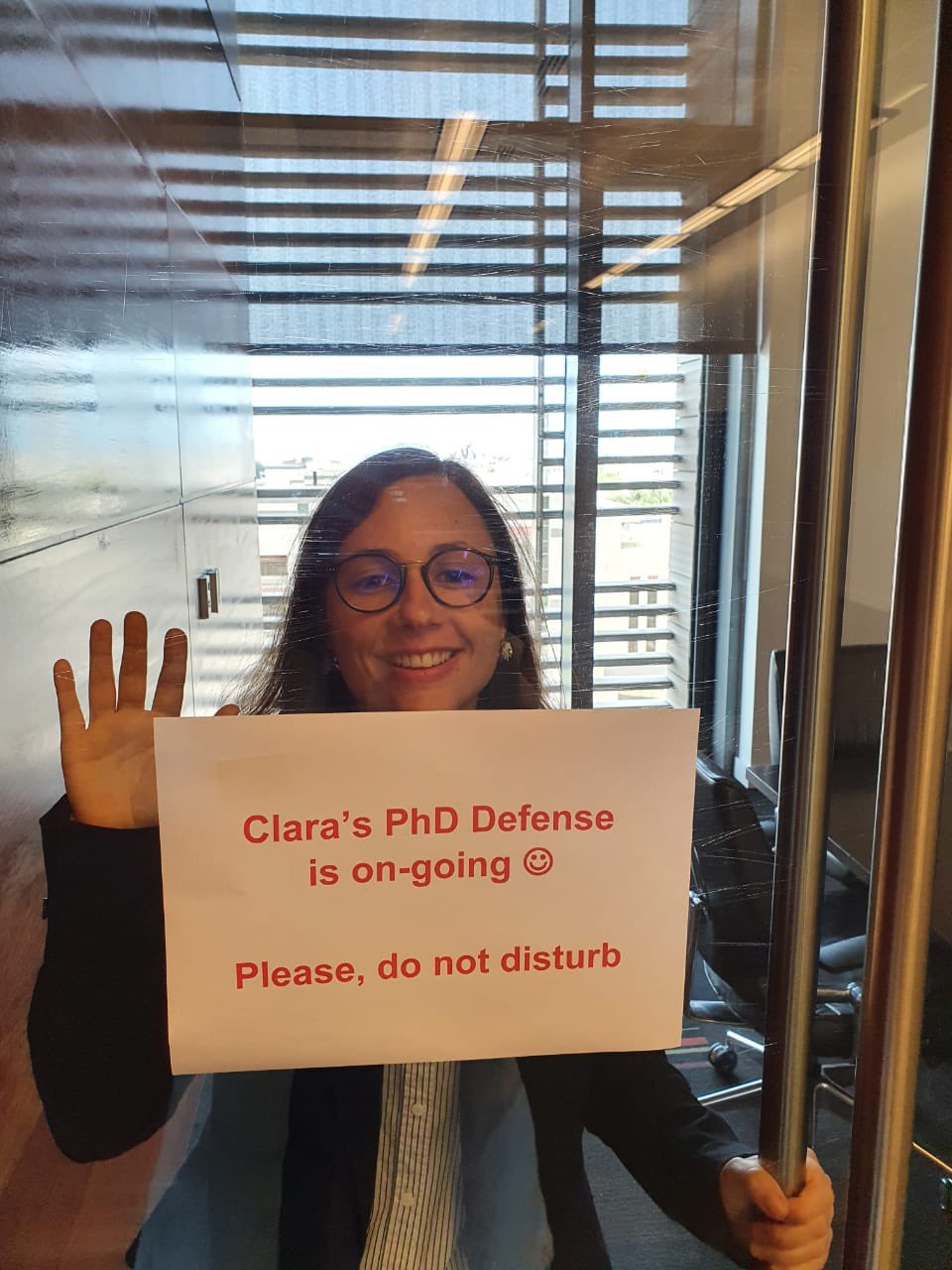.jpg?sfvrsn=39330263_0)
.jpg?sfvrsn=39330263_0)

24 October, 2021
Congratulations to Clara Modenesi who successfully her PhD thesis "Hot and Cold Seeps in the Red Sea: Surface and Subsurface Manifestations" on September 16.
Her committee members were Dr. Abdulkader Afifi, Dr.
Volker Vahrenkamp, Dr. Daniele Daffonchio and Dr. Joe Cartwright
(University of Oxford, UK). Clara was supervised by Dr. J. Carlos Santamarina.
Abstract
Cold and hot seeps signal active subsurface processes. This thesis documents the study of geological phenomena and features observed in the Red Sea in association to (1) hot hydrothermal and (2) cold hydrocarbon seeps. Hydrothermal activity promotes the formation of hot and stratified brine pools within deeps along the central trough of the Red Sea. Conductivity, temperature and time-lapse photography help identify the unique processes that emerge within these pools. Hydrothermal sediments nucleate and grow within stratified brines. Their sedimentation -together with Red Sea background-pelagic grains- detects density contrasts at layer interfaces, is affected by salinity gradients (diffusiophoresis), favors aggregation as grains fall into higher salinity fluids, and grains/aggregates are transported by convective currents within the double-diffusive convective system. Stratified layers will be affected by tailings disposal from deep-sea mining operations. Hydrothermal metalliferous sediments accumulate within deeps along the central trough of the Red Sea, such as in the Atlantis II and neighboring deeps. The sediment column records distinct combinations between background-pelagic and hydrothermal sedimentation. A comprehensive laboratory characterization study shows that these metalliferous sediments exhibit exceptional properties when compared to sediments worldwide: from high specific surface area and specific gravity to very open fabrics and high compressibility. These unique properties affect acoustic characterization and sampling operations, laboratory testing, and mining engineering, from separation and enrichment processes to environmental analyses and tailings disposal operations. Cold hydrocarbon seeps are evident at multiple locations across the Red Sea and manifest through hard crusts, oil and gas flares in the water column, oil slicks at the surface and oil impregnations within the sediment. This study explores in detail the emergence of two unique features associated to active hydrocarbon seeps: authigenic precipitates within seafloor sediments and carbonate chimneys that rise above the seafloor. The research approach includes imaging (X-Ray μ-CT, SEM), compositional characterization (XRD, EDS, thin sections, ICP-OES) and sediment characterization. Results show that hydrocarbon escape through shallow sediment layers opens discontinuities where grain-displacive, hollow sulfur nodules form, while the host sediment becomes depleted of carbonates. Chimneys result from bio-chemo-hydraulically coupled processes and exhibit a characteristic layered structure that tends to preserve internal flow channels during active fluid escape and growth.

